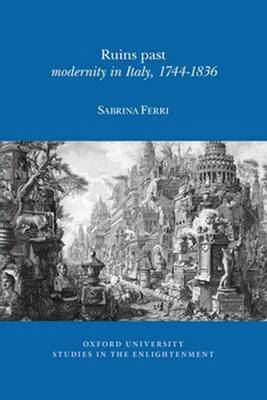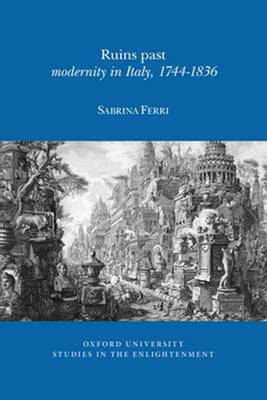
- Afhalen na 1 uur in een winkel met voorraad
- Gratis thuislevering in België vanaf € 30
- Ruim aanbod met 7 miljoen producten
- Afhalen na 1 uur in een winkel met voorraad
- Gratis thuislevering in België vanaf € 30
- Ruim aanbod met 7 miljoen producten
Zoeken
Omschrijving
In an era haunted by its past, modern Europe sought to break with the old; the future and the new became the ideal. In Italy however, where the remains of the past dominated the landscape, ruins were a token both of decadence and of the inspiring legacy of tradition. Sabrina Ferri proposes a counter-narrative to the European story of progress by focusing on the often-marginalized and distinctive case of Italy. For Italians, ruins uncovered the creative potential of the past, transforming it into an inexhaustible source of philosophical speculation and poetic invention whilst simultaneously symbolizing decay, loss and melancholy. Focusing on the representation of ruins by Italian writers, scientists, and artists between the mid-eighteenth and early nineteenth centuries, Sabrina Ferri explores the culture of the period and traces Italy's complex relationship with its past. Combining the analysis of major works, from Vico's New science to Leopardi's Canti, with that of archival sources and little-studied materials such as scientific travel journals, letters, and political essays, the author reveals how: the ruin became a figure for Italy's uneasy transition into modernity; the interplay between reflections on the processes of history and speculations on the laws of nature shaped the country's sense of the past and its vision of the future; the convergence of narratives depicting historical and natural change influenced both the creative arts and the emerging sciences of geology, biology, and archaeology; the temporal crisis at the dawn of the nineteenth century called into question traditional models for investigating the past and understanding the present.
Specificaties
Betrokkenen
- Auteur(s):
- Uitgeverij:
Inhoud
- Aantal bladzijden:
- 279
- Taal:
- Engels
- Reeks:
- Reeksnummer:
- nr. 2015
Eigenschappen
- Productcode (EAN):
- 9780729411714
- Verschijningsdatum:
- 3/12/2015
- Uitvoering:
- Paperback
- Formaat:
- Trade paperback (VS)
- Afmetingen:
- 156 mm x 233 mm
- Gewicht:
- 299 g

Alleen bij Standaard Boekhandel
+ 176 punten op je klantenkaart van Standaard Boekhandel
Beoordelingen
We publiceren alleen reviews die voldoen aan de voorwaarden voor reviews. Bekijk onze voorwaarden voor reviews.








